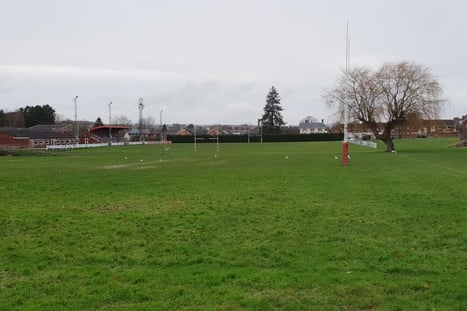Wellington Rugby Club have won approval for their plans to expand and develop the Beech Grove pitch.
Somerset Council have given the club were the green light to expand their playing field and develop another pitch for training purposes, provided they meet certain conditions.
The plans were first submitted almost a year ago by former club chairman Phil Braddick. They set out proposals to adapt the Beech Grove pitch, located at the south of the club’s building, into two separate pitches. The area will be expanded to create room for one 106x86m pitch and a smaller floodlit 88x52m pitch.
The layout of the field will be rotated 90 degrees, with both pitches running north to south instead of its current east to west direction, allowing for 5m running zones in between and either side of each pitch.
The rugby club said they needed to expand their facilities in order to meet the growing demand for club membership. They told planners the expansion is ‘essential to support the needs of the community.’
This field has provided a space for many teams, including the newly formed Wellington Khaki Sox baseball team, and has been made available to students from Court Fields and Beech Grove Primary to enjoy.
The Beech Grove pitch is not currently suitable for play throughout much of winter. Streams run alongside the borders of the pitch, which can cause it to become waterlogged during periods of heavy rain.
In attempt to combat flooding issues, these streams will be piped and a new field draining system will be implemented. 100m of open ditch will be cultivated on one side and an additional 175m of ditch will be retained on the other.
The expansion of this field will require construction work to edge into the Basins, a local nature reserve which lies just 15m from the south-west edge of the rugby club’s pitch.
The sensitivity of the site has proved a challenge to the proposals. A resident’s petition demanding a consultation over further developments at the rugby club racked up nearly 900 signatures in support.
Concern had been raised over the removal of 13 trees at the site, 12 along the south-west border of the field and a further standalone Willow tree.
But worries were softened when it was discovered that most of the trees slated for removal were classed as ‘end of life.’
Residents also expressed concern over the project’s potential impacts on wildlife. Bats and birds are known to inhabit the trees and water voles use the surrounding areas.
Therefore, this application has been approved on the proviso that the area must be compensated environmentally and the construction process is to cause minimal disturbance.
To combat wildlife concern, bat boxes will be installed before work begins. In addition, tree works will not begin until it is confirmed that no birds are nesting their young.
Additionally, the 13 trees that are scheduled to be removed will be compensated by 38 new trees, in goat willow, hawthorn, hazel, native alder, field maple and oak variations.
An ecology expert said the replacement tree scheme would be a net benefit. She claimed the plan would significantly improve the quality of the nature reserve in the long-term and minimise the environmental impact during the expansion process.


.jpeg?width=209&height=140&crop=209:145,smart&quality=75)


Comments
This article has no comments yet. Be the first to leave a comment.